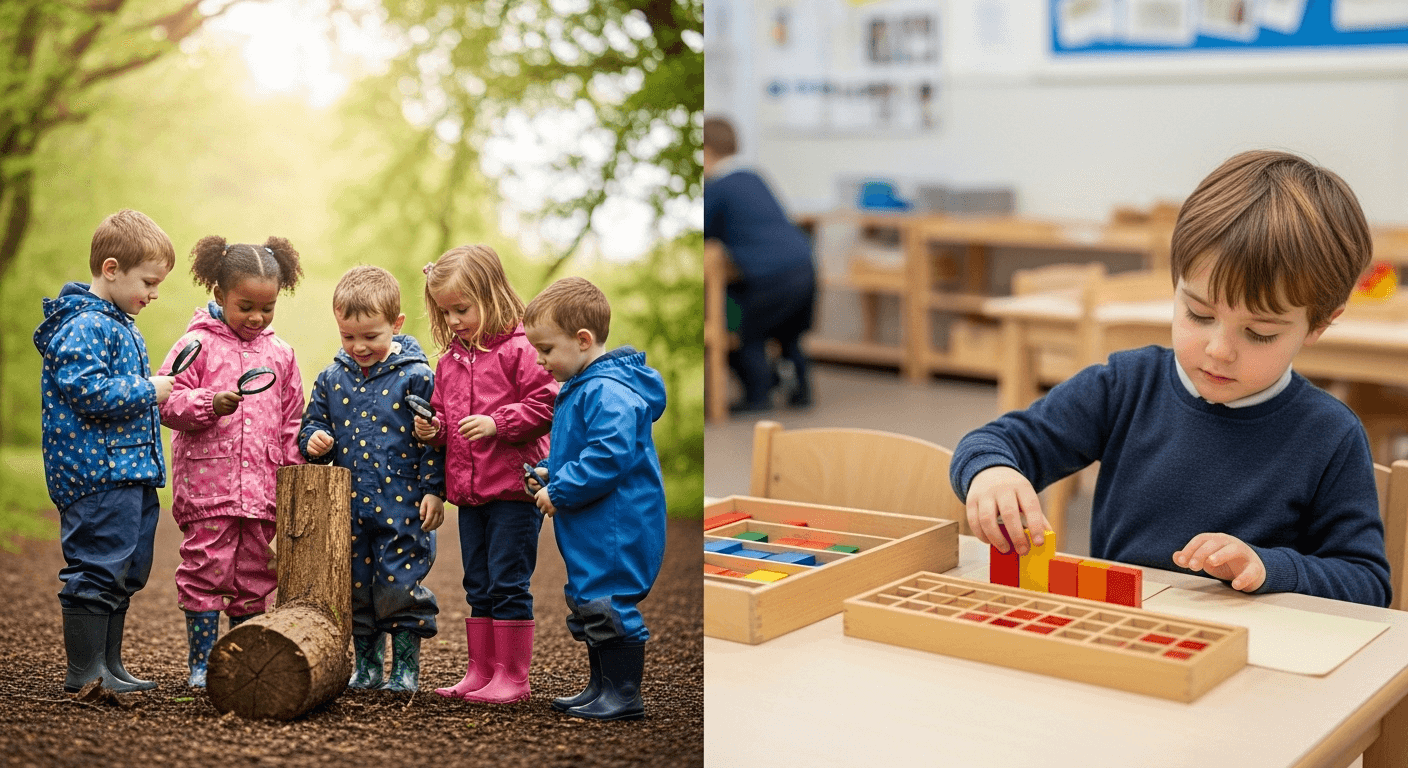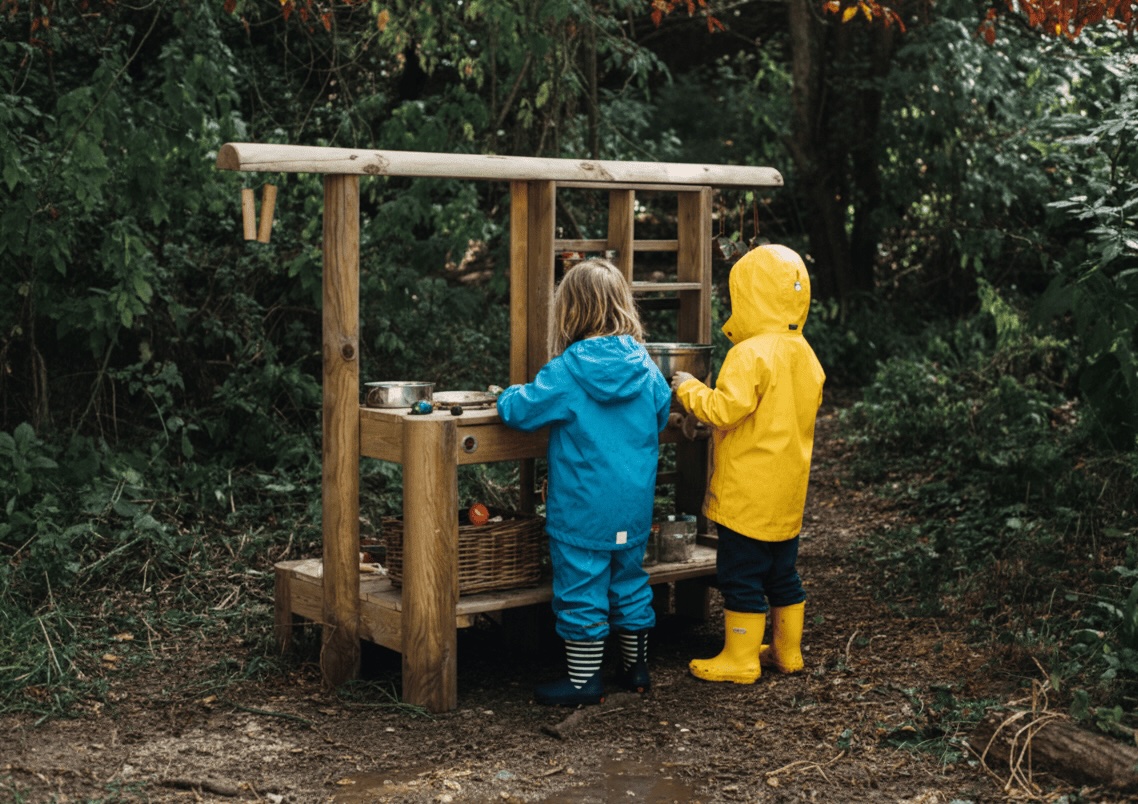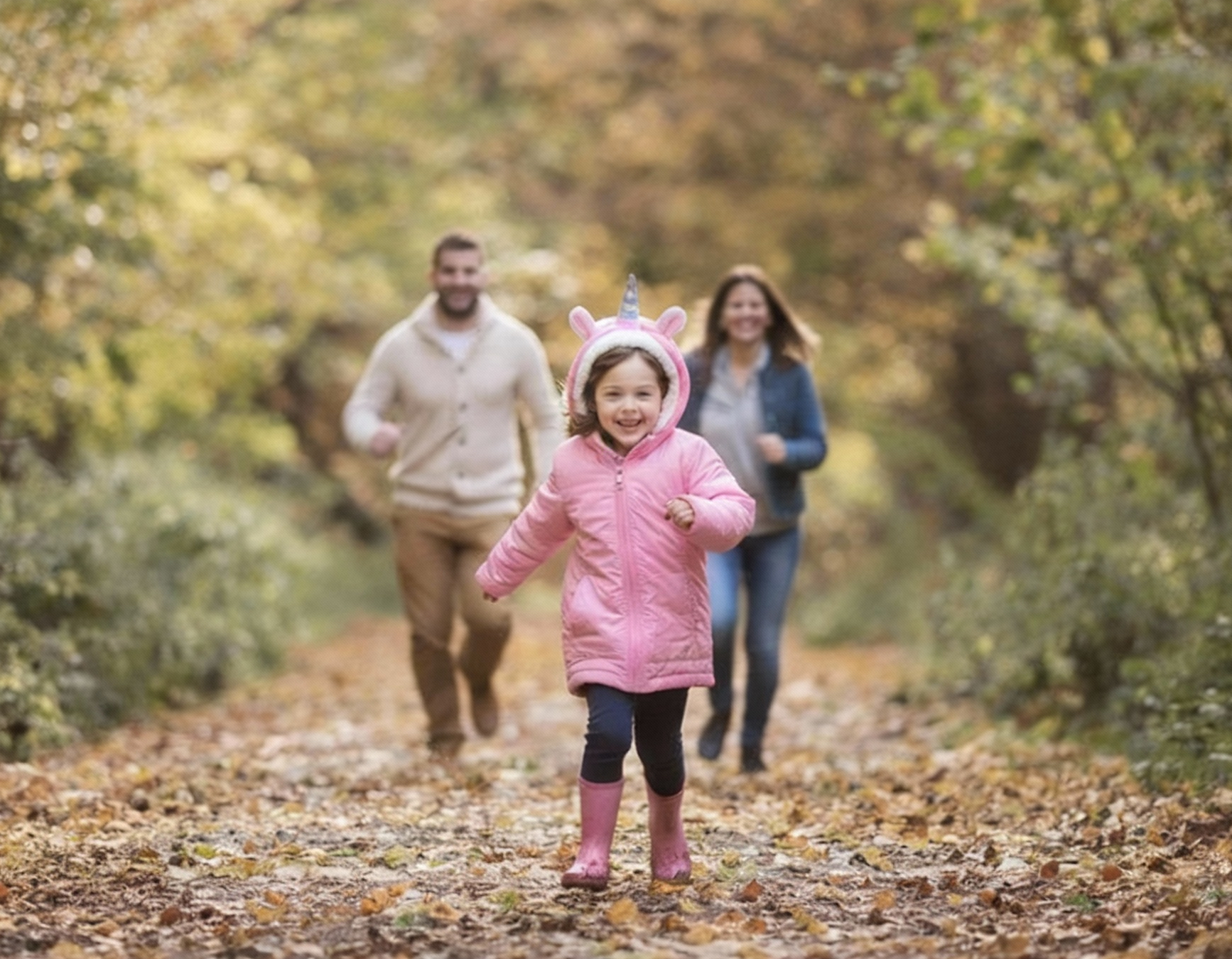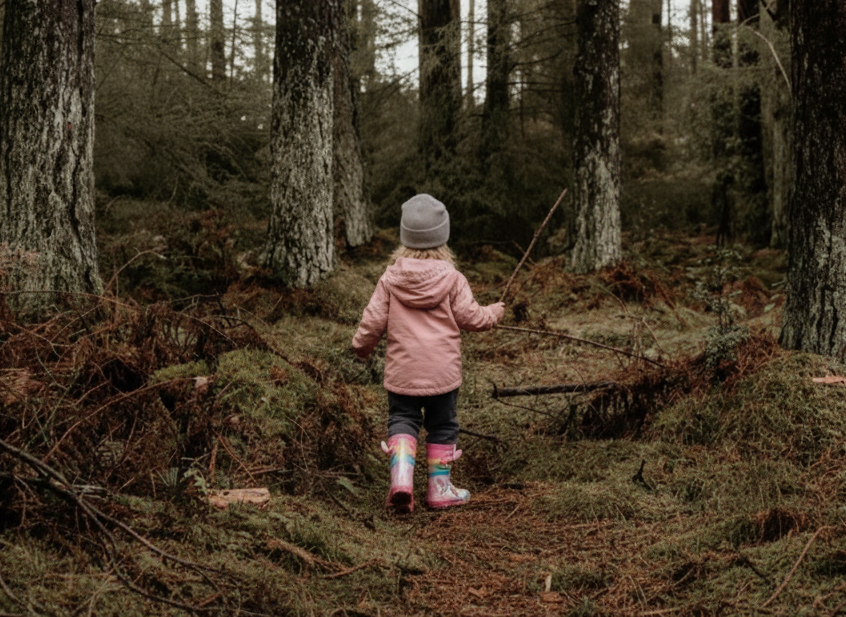· Parental Tips · 5 min read
Beyond the Nursery Walls: Outdoor Learning in the Early Years
We're diving into why outdoor learning in the early years, from messy toddler nature play to the principles of Forest School, is more than just fresh air – it's essential for their development.

Photo by Annie Spratt on Unsplash
For many parents, the idea of education begins within the four walls of a nursery or preschool. But what happens when we take learning beyond those walls—into the woods, meadows, and gardens that surround us? The answer is profound: outdoor learning opens up a world of developmental, emotional, and sensory benefits for young children, especially those under five.
This article explores the immense value of outdoor learning in early years, how it supports child development, and practical ways parents can encourage nature play and learning through the outdoors—right from toddlerhood.
What Is a Forest School?
A forest school is not just a nursery held outside — it’s a specific educational approach that centres around regular, long-term access to natural environments, where children take the lead in their own learning.
Rather than being structured around indoor routines and worksheets, forest schools are:
- Child-led – children choose their activities, follow their interests, and learn through experience
- Play-based – unstructured, imaginative play is seen as a primary driver of development
- Nature-immersive – sessions take place outdoors, year-round, in all weather
- Risk-aware – children are allowed to take supported, age-appropriate risks to build confidence and resilience
Many forest schools work alongside or within early years settings, often led by qualified practitioners with forest school training. These programmes are especially well-suited to children aged 2–5, who are in a crucial stage of physical, social, and cognitive development.
What Does Outdoor Learning Look Like for the Under-Fives?
For toddlers and preschoolers, learning through nature looks a lot like joyful play. You might see children:
- Climbing over logs and balancing on beams
- Mixing mud potions or building mini shelters
- Observing insects and tracking animal prints
- Sitting in a circle for story time in the woods
- Using tools under supervision — like whittling sticks or hammering pegs into logs
Activities are carefully supported by practitioners but not overly directed. The role of the adult is to observe, scaffold learning where needed, and create a safe environment for exploration.
The goal isn’t to “teach” in the traditional sense, but to facilitate deep, experiential learning that is embedded in the child’s own discoveries.
How Forest School Benefits Young Children
The early years are a golden window for shaping not just knowledge, but emotional resilience, creativity, and a connection to the world. Forest school supports all of these areas:
1. Physical Development
Uneven terrain, climbing, digging, and balancing naturally support gross and fine motor skills. Children grow stronger and more coordinated through constant, meaningful movement.
2. Social & Emotional Growth
Working in small groups outdoors fosters collaboration, communication, and empathy. Children learn to resolve conflict, express themselves, and gain confidence through manageable risk-taking.
3. Cognitive & Language Development
Natural settings stimulate curiosity. Children ask questions, experiment, and solve problems. They also expand vocabulary through storytelling, naming natural objects, and engaging in imaginative play.
4. Connection to Nature
Forest school fosters a long-term emotional bond with the natural world — something research shows contributes to mental health, environmental stewardship, and reduced anxiety.
What Makes Forest School Different From a Traditional Nursery?
| Feature | Traditional Nursery | Forest School |
|---|---|---|
| Environment | Mostly indoors, fixed equipment | Entirely or mostly outdoors in woodland or natural space |
| Structure | Structured timetable | Flexible, child-led flow |
| Learning Style | Adult-directed, curriculum-based | Play-based, experiential, interest-led |
| Risk | Minimised, often avoided | Managed and embraced as developmental opportunity |
| Tools & Materials | Plastic toys, learning aids | Natural materials, real tools (with supervision) |
This doesn’t mean forest school is better for every child — but it does offer a powerful alternative for children who thrive in movement-rich, sensory-based environments.
How to Prepare for Forest School as a Parent
If you’re considering a forest school for your toddler or preschooler, here are some ways to get ready:
1. Understand the Philosophy
Read up on the forest school approach. It may feel unfamiliar at first — especially if you’re used to more traditional early education. Trust in the child-led, nature-based ethos is key.
2. Embrace the Mess
Your child will likely come home muddy, wet, or grass-stained — and that’s a good thing! Invest in waterproofs, boots, and layers. Accepting outdoor messiness is part of the journey.
3. Ask Questions During Your Visit
When visiting a provider, ask about:
- Staff training and child-to-adult ratios
- Types of activities and how they support different areas of learning
- Safety policies and how risk is managed
- The balance between structure and free play
4. Support at Home
Reinforce the experience with nature-based play at home:
- Go for nature walks
- Let your child explore mud, leaves, sticks
- Ask open-ended questions about what they saw or did
This doesn’t replace forest school, but it complements the learning beautifully.
Choosing the Right Forest School Provider
When using a site like Forest School Finder, it’s important to look for a provider that aligns with your values and your child’s personality. Some questions to consider:
- Does the setting feel warm, inclusive, and child-centred?
- Is the provider trained in Forest School principles (Level 3 Forest School Leader qualification)?
- How does the provider communicate with parents about what children are doing and learning?
- What is the frequency of outdoor sessions — is it every day, or a few times a week?
Remember, a good forest school isn’t about how wild the woods are — it’s about how the adults facilitate children’s natural learning in a safe, stimulating way.
Final Thoughts
Choosing a forest school means choosing a different path — one that leads beyond the nursery walls, into the open arms of nature. It’s a space where toddlers and preschoolers can grow at their own pace, guided not by worksheets or walls, but by sticks, stories, puddles, and possibilities.
If you’re ready to explore what forest school could offer your child, start by browsing providers near you on Forest School Finder. Each listing offers insight into the philosophy, environment, and ethos behind the setting — helping you find the perfect outdoor learning experience for your little one.
🌿 Search for local forest schools today and help your child thrive through nature-led learning.



